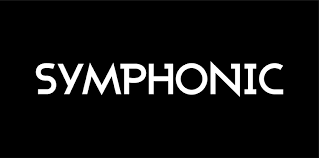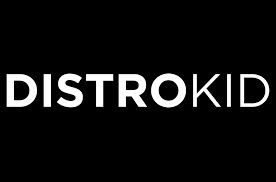Advanced analytics dashboard
Supports AI-generated music (with disclosure)
Yet, there are potential drawbacks:
Not free – Starter plan costs $19.99/year per artist
Partner plan is invite-only, with ~15% revenue share
Limited speed and automation compared to platforms like DistroKid
Genre bias – stronger in Latin, EDM, and hip-hop
No physical distribution or merch tools

Better Alternatives to Symphonic Distribution in 2025
Whether you're looking for affordability, automation, mastering integration, or genre reach, these real-world platforms are popular alternatives to Symphonic:
DistroKid – For Fast, Unlimited, and Budget-Friendly Distribution
Price: $22.99/year
Royalties: 100% to artist
Ideal for: DIY musicians releasing often
Why it might be better than Symphonic:
DistroKid is lightning-fast, lets you release unlimited tracks annually, and comes with royalty splitting, lyric sync, and Spotify pre-saves. It’s fully self-serve and made for speed, making it ideal for creators with a consistent release schedule.
Missing features:
No sync licensing, no customer manager, limited hands-on help.
TuneCore – For Publishing Admin and Licensing Support
Price: $14.99/year per artist (Rising Artist Plan)
Royalties: 100% retained
Ideal for: Artists wanting publishing income and international expansion
Why it might be better than Symphonic:
TuneCore offers global publishing administration and collects mechanical royalties in 200+ countries. Their revamped plans in 2025 include playlist pitching and social monetization.
Bonus: Includes support for TikTok SoundOn releases, Facebook monetization, and live reporting.
CD Baby – For One-Time Payments and Physical Distribution
Price: $9.95/single or $29.95/album (one-time fee)
Royalties: 91% (after 9% commission)
Ideal for: Artists who release infrequently but want lifetime access
Why it might be better than Symphonic:
CD Baby offers physical CD and vinyl distribution, sync licensing, and long-term access without ongoing subscription fees. It’s a great fit for catalog-heavy artists or bands with physical merch.
Trade-off: Slower release timelines, takes 9% cut on streaming.
LANDR – For Musicians Needing Built-In AI Mastering
Price: $23.99/year (basic plan)
Royalties: 100%
Ideal for: Producers seeking an all-in-one production + distribution solution
Why it might be better than Symphonic:
LANDR is one of the few platforms combining AI mastering, digital distribution, and collaboration tools. You can finish a mix, master it, and release it to DSPs from one dashboard.
Weakness: Less robust sync licensing or playlist pitching than Symphonic.
Amuse – For Mobile-First Artists and Free Distribution
Price: Free tier or $59.99/year (Pro)
Royalties: 100%
Ideal for: Artists looking for zero-cost entry or passive income
Why it might be better than Symphonic:
Amuse’s free plan gives you basic distribution with no upfront cost. The Pro plan includes early access to royalties, faster delivery, and support. Their mobile app is particularly strong for creators on the go.
Caveats: Less hands-on support, weaker analytics tools.
Ditto Music – For Chart-Eligible Releases and Indie Labels
Price: $19/year per artist
Royalties: 100%
Ideal for: Independent artists or small labels in UK, US, or EU markets
Why it might be better than Symphonic:
Ditto offers chart registration, pre-save tools, and even label services. It’s a strong match for career artists who need full control and chart eligibility in official rankings like Billboard or UK Top 40.
ONErpm – For Playlist Pitching and Global Label Services
Price: No upfront fee; takes a cut of royalties (~15%)
Royalties: Split
Ideal for: Mid-tier to high-tier artists focused on DSP growth
Why it might be better than Symphonic:
ONErpm offers active playlist pitching, audience targeting, and label services for free. The trade-off? They take a cut of your earnings—but you get real label-level support and campaign strategy.
Unique to ONErpm: Includes Brazil- and Latin-focused DSP access and in-house content studios.
When Is Symphonic Still the Best Option?
Despite these alternatives, Symphonic remains one of the best platforms if you:
Want sync opportunities in film, TV, and video games
Need SplitShare? for complex royalty splits
Have AI-generated music that needs careful rights handling
Want access to support in genres like EDM and Latin
Are applying for the Partner plan and expect career growth
FAQ: Are There Better Alternatives to Symphonic Distribution?
Q1: Which distributor gives the most royalties?
DistroKid, Ditto, LANDR, and TuneCore all offer 100% royalty payout (no commission taken).
Q2: What if I only release 1-2 songs per year?
Use CD Baby, since you only pay once and your music stays up forever.
Q3: Which platform is best for AI music creators?
Symphonic, LANDR, and Amuse support AI music if disclosed. Symphonic provides more oversight, while LANDR includes AI mastering.
Q4: Can I get playlist support outside of Symphonic?
Yes. ONErpm, Ditto, and TuneCore offer DSP pitching tools or direct submission to Spotify.
Q5: Is free distribution worth it?
If you're just starting or testing ideas, Amuse Free or RouteNote (85% royalties) are solid. But for growth, investing in a paid service unlocks more features.
Final Thoughts: Choose Based on What You Value Most
So, are there better alternatives to Symphonic Distribution? In many cases—yes. Symphonic is a polished, high-support platform for artists focused on sync, royalties, and catalog growth. But if your needs are faster releases, no upfront fees, AI mastering, or mobile-first workflows, one of the competitors listed above could suit you better.
The key is to match your distribution partner to your creative workflow and release strategy. No one-size-fits-all solution exists—but in 2025, you have more power than ever to choose wisely.
Learn more about AI MUSIC







